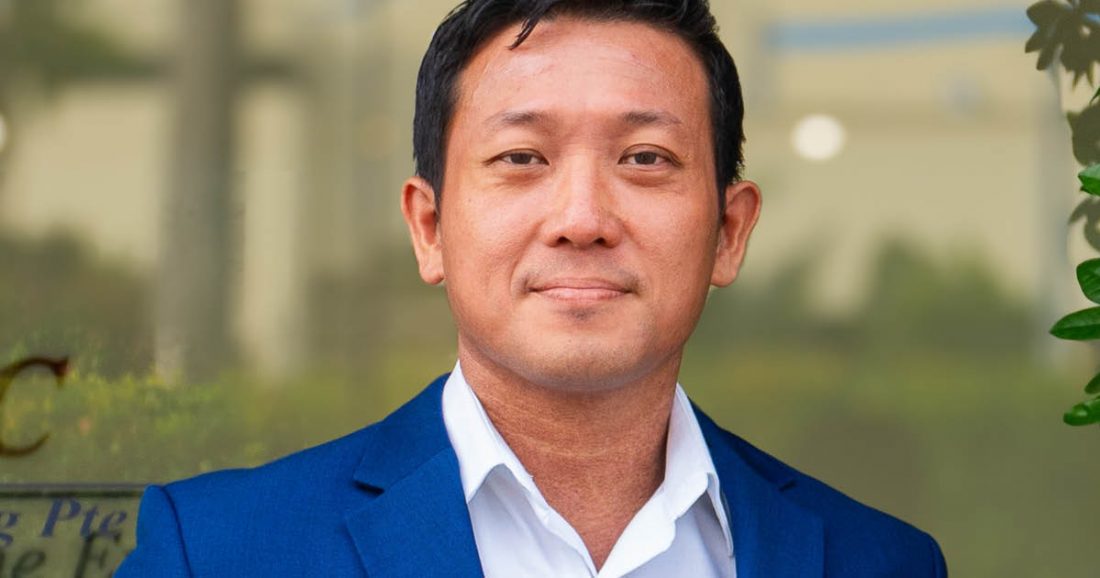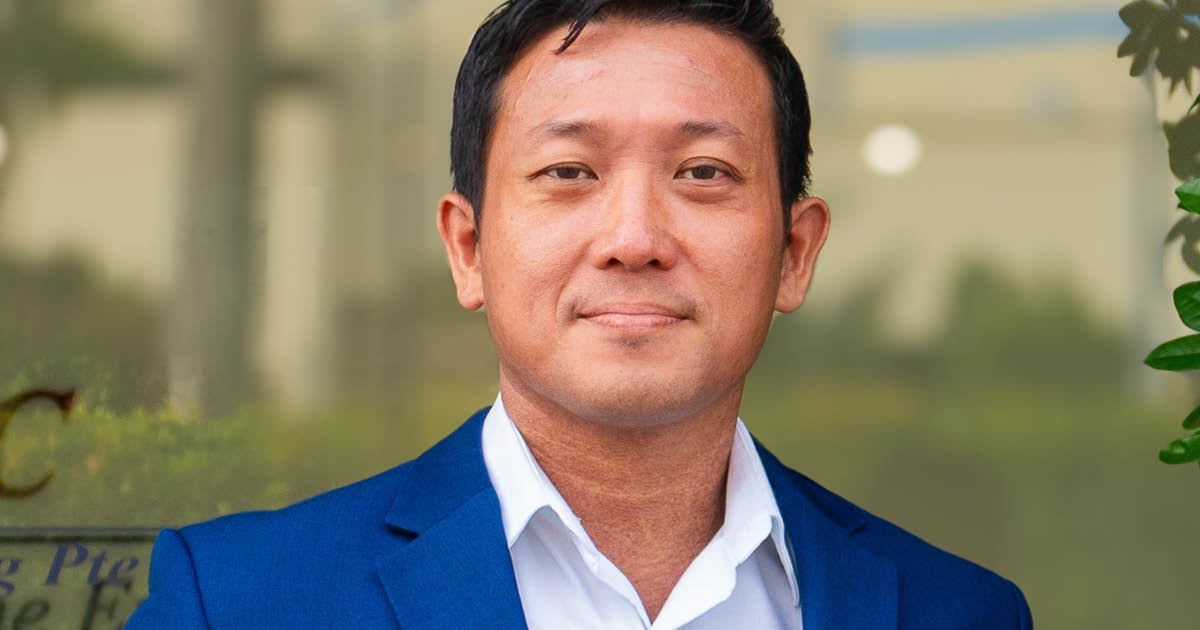Singapore is famous for many things: its distinct skyline, its livability and its smart city status, which are all made possible thanks to the country’s many capable construction and engineering companies.
One of these is HSC Pipeline Engineering. Originally founded in 1993, HSC made a name for itself by building infrastructure pipelines for gas, water, power, telecommunications and district cooling systems. Over the years, it has expanded the services that allow for smarter and more efficient construction, focusing on reliable utility mapping, feasibility studies and planning.
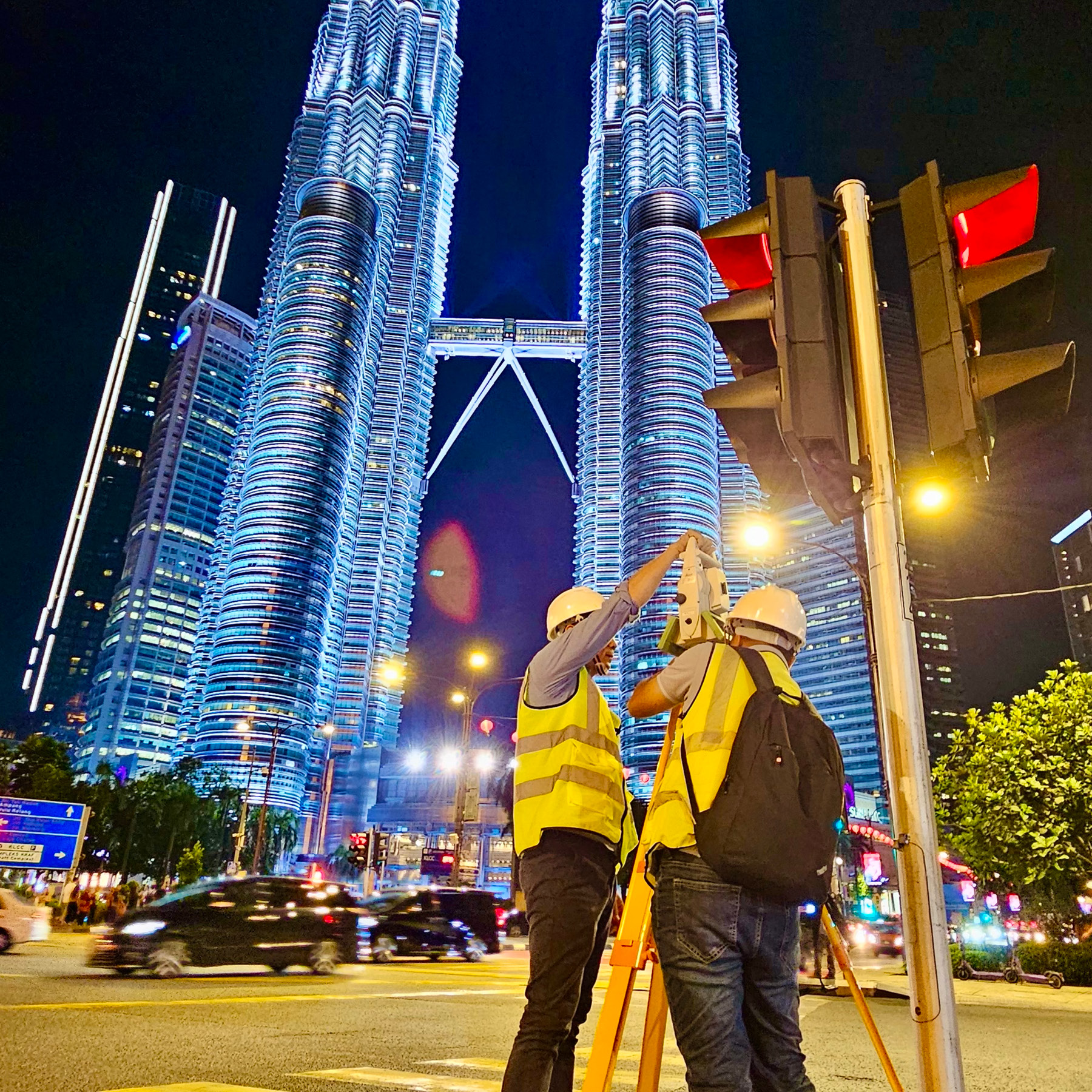
“Among all the utility engineering companies in Singapore, we stand out as one of the most innovative, backed by a team that’s always ready to challenge the status quo.”
Much of the company’s recent success and expansion is due to the leadership of Shane Shi – the second-generation Managing Director who succeeded his father five years ago.
“My father had it very tough as there were a lot of uncertainties back then,” Shi tells The CEO Magazine. “He single-handedly grew the company from scratch to become one of the most reputable gas and district cooling system contractors, which provided HSC with a solid foundation for further growth.”
With an established reputation, HSC fostered stable relationships with clients and contractors, which gave Shi a springboard to tackle a new wave of challenges in the digital era.
“The challenges we face today are very different from those my father encountered when he founded the company,” he says. “We are now dealing with significant cost increases due to regulatory requirements. The COVID-19 pandemic was certainly a huge wake-up call, forcing us to plan and adapt to changes more quickly than ever before.”
Working smarter, not harder
Since the start of Shi’s career with HSC, he spearheaded a wide variety of innovative projects to improve the company’s efficiency and expand the scope of services it offers.
“Among all the utility engineering companies in Singapore, we stand out as one of the most innovative, backed by a team that’s always ready to challenge the status quo,” Shi says with a smile.
The earliest digitization projects started in 2011, which took the form of standardizing and digitizing handwritten daily reports received from worksites using Google Forms. There were many issues with the handwritten daily reports but the digitized daily reporting system minimized repetitive data entry and enhanced project efficiency.
“This early project had a very positive effect on our processes and acted as a precursor to the different innovative efforts implemented by the different departments.”
In 2016, HSC became one of the pioneers in adopting the digital mode for the permit-to-work (PTW) system, which had traditionally been performed in person. Before this, project engineers needed to be present at a worksite to sign off and allow work to begin, but this meant that project engineers had to spend a lot of time traveling around Singapore.
“Adopting the digital PTW system cost us around S$70,000 [US$53,000], excluding maintenance costs. While the initial cost was significant, we soon discovered that the digital PTW system saved our project teams about two hours of travel time daily, enabling them to use the saved hours to plan and contribute more effectively to projects,” Shi explains.
With the formation of a new digital team in 2019, HSC’s developers began creating in-house apps for various tasks, with the first app created to customize the needs of the daily reports.
“Using a low-code, no-code platform, our digital team has created an app for site supervisors to report their work digitally,” Shi says. “Project teams can assess and verify the work done online. The daily report app provides key data to the Procurement Department handling the inventory, and the Quantity Surveying Department handling the projects’ claims.”
“By having a centralized source of data, we were able to resolve issues across the Departments. By adopting and embracing technology, we were able to function more efficiently as a whole as there are fewer repetitive mundane tasks.”
Revolutionizing the industry
Utility engineering has become increasingly challenging as Singapore has grown more urbanized, Shi explains. The underground utility networks have become denser due to rising demands from various industries, such as the renewal of aging gas, water and power infrastructure, and the expanding networks for District Cooling Systems, the EV charging market, data centers and more.
When utility contractors like HSC are tasked with laying new utilities, they need to coordinate with different utility companies to gather information about their assets in the work zone. This ensures that contractors are aware of the existing underground utilities in the area. However, the information is often indicative at best.
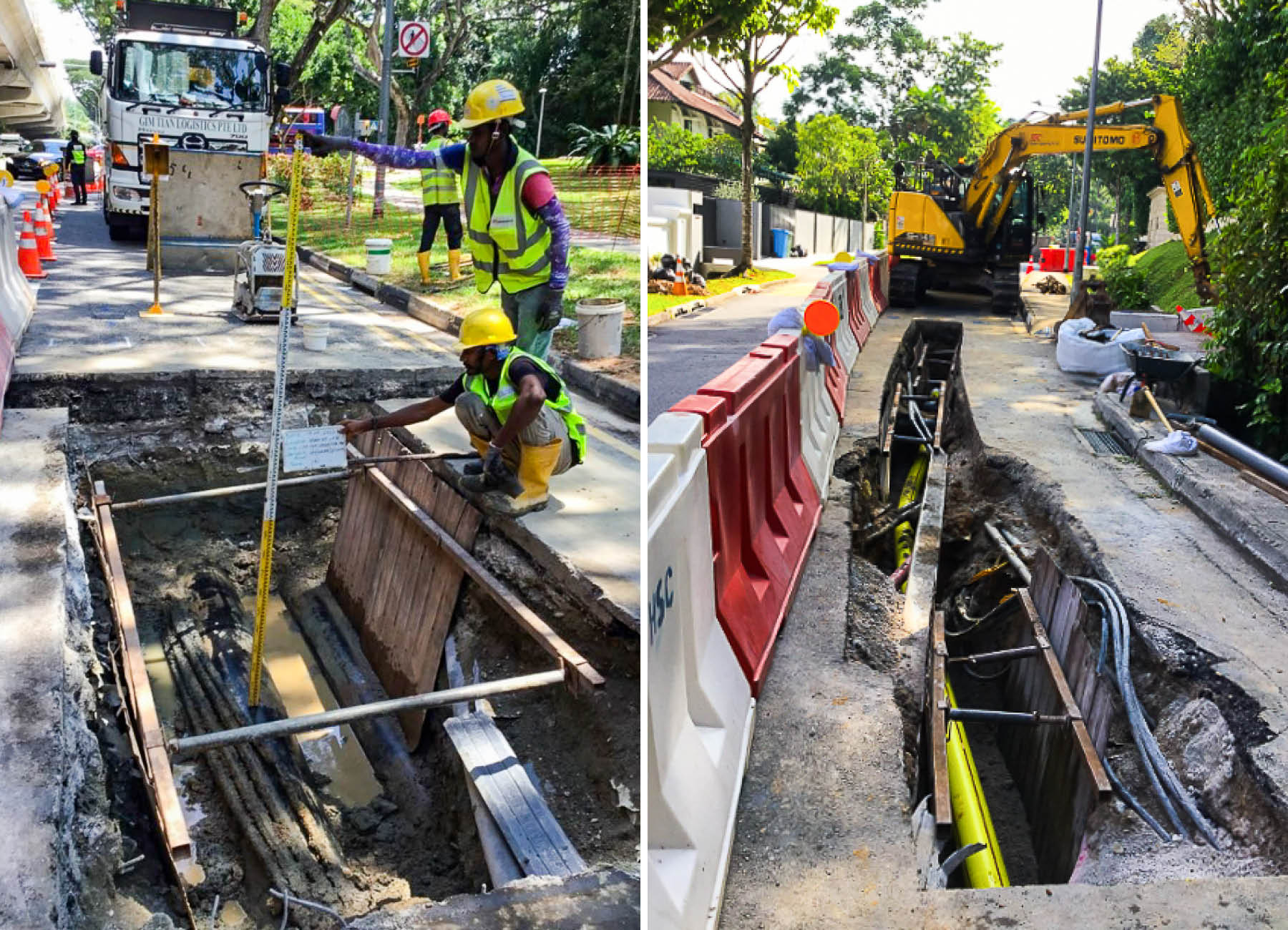
“By integrating MCGPR technology, we didn’t just enhance our operations; we revolutionized the way utility mapping is approached, setting a new benchmark for the entire industry.”
“Multi-channel ground penetrating radar (MCGPR) allowed us to map underground utilities with unprecedented precision, drastically reducing the need for disruptive trial trenches and minimizing the risks associated with traditional methods. This technology not only improved project efficiency but also elevated safety standards and reduced costs across the board,” he says.
“By integrating MCGPR technology, we didn’t just enhance our operations; we revolutionized the way utility mapping is approached, setting a new benchmark for the entire industry. This innovation has not only empowered our teams to plan and execute projects with greater confidence, but it has also opened up new opportunities to deliver more value to our clients and partners.
“MCGPR is a game-changer, a technology that is beneficial to the whole utility construction industry. We collaborated closely with government agencies like the Singapore Land Authority, the Urban Redevelopment Authority, the Land Transport Authority and SP Group to recognize the benefits of MCGPR, bringing it to the mass market; envisaging an overall reduction in construction cost for Singapore.”

Advertisement
HSC has since broadened its services by launching its utility mapping department, a crucial step toward vertical integration. Originally focused on utility installation, HSC has broadened its expertise to include utility mapping, feasibility studies, cable detection, surveying and road resurfacing, enhancing its ability to offer end-to-end solutions.
“Our unique journey has always been about challenging the status quo. Vertical integration brings numerous benefits, such as improved coordination, reduced downtime and more efficient resource utilization,” Shi says. “We are now gradually offering these in-house services to external clients, as we anticipate growing demand for utility mapping and related services.”
Trusted partners
For a company like HSC, success depends on strong working relationships with numerous suppliers and long-term partners.
“We have been working with some of our suppliers for 10–15 years and we really depend on them for their products and services,” Shi says.
Some of HSC’s most important suppliers include Highway International, Shanthi Engineering & Construction, Lih Ming Construction and CPP Global Products.
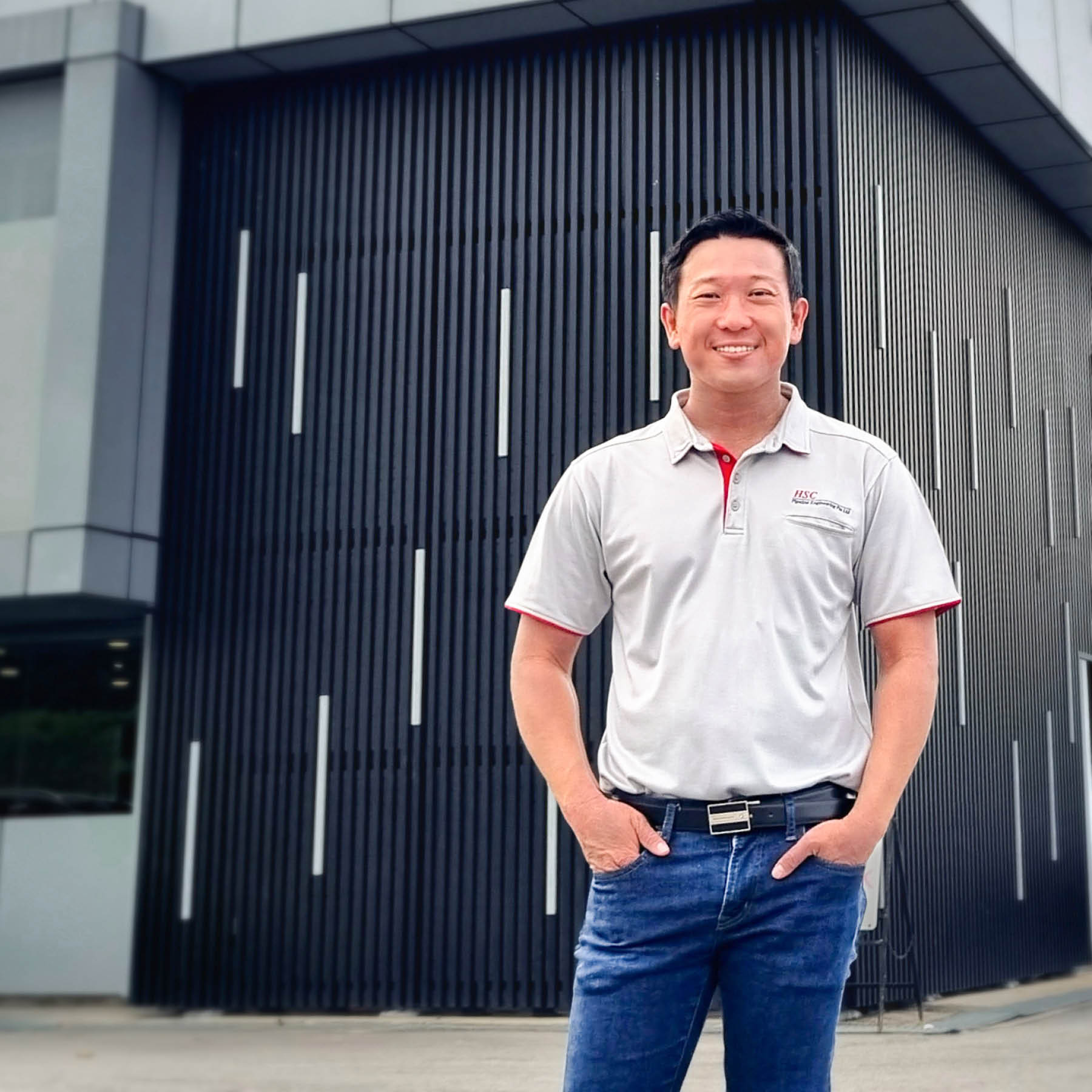
“The key to having a successful partnership is trust.”
“The key to having a successful partnership is trust. The trust that they will deliver quality products and services, the trust that they will assist in times of need, and the trust in HSC’s timely payment,” he says.
“Reliable and transparent communication between HSC and the suppliers and subcontractors is crucial for ensuring the timely delivery of materials, prevention of delays and maintenance of project momentum. This synergy translates to overall enhanced project efficiency and client satisfaction.”
Leadership lessons
Shi acknowledges that when he stepped into the role of Managing Director in 2019, he faced significant challenges. Being still relatively young for the position, he was aware of the expectations and potential doubts surrounding his leadership. It was a humbling experience, one that pushed him to focus on learning, growing and earning the trust of his team.
“The key to leadership is understanding what motivates each employee, which requires knowing them at a personal level. When I was a Project Manager, maintaining a direct connection to the project engineers and teams of migrant workers was easier due to the smaller number of people involved,” Shi says.
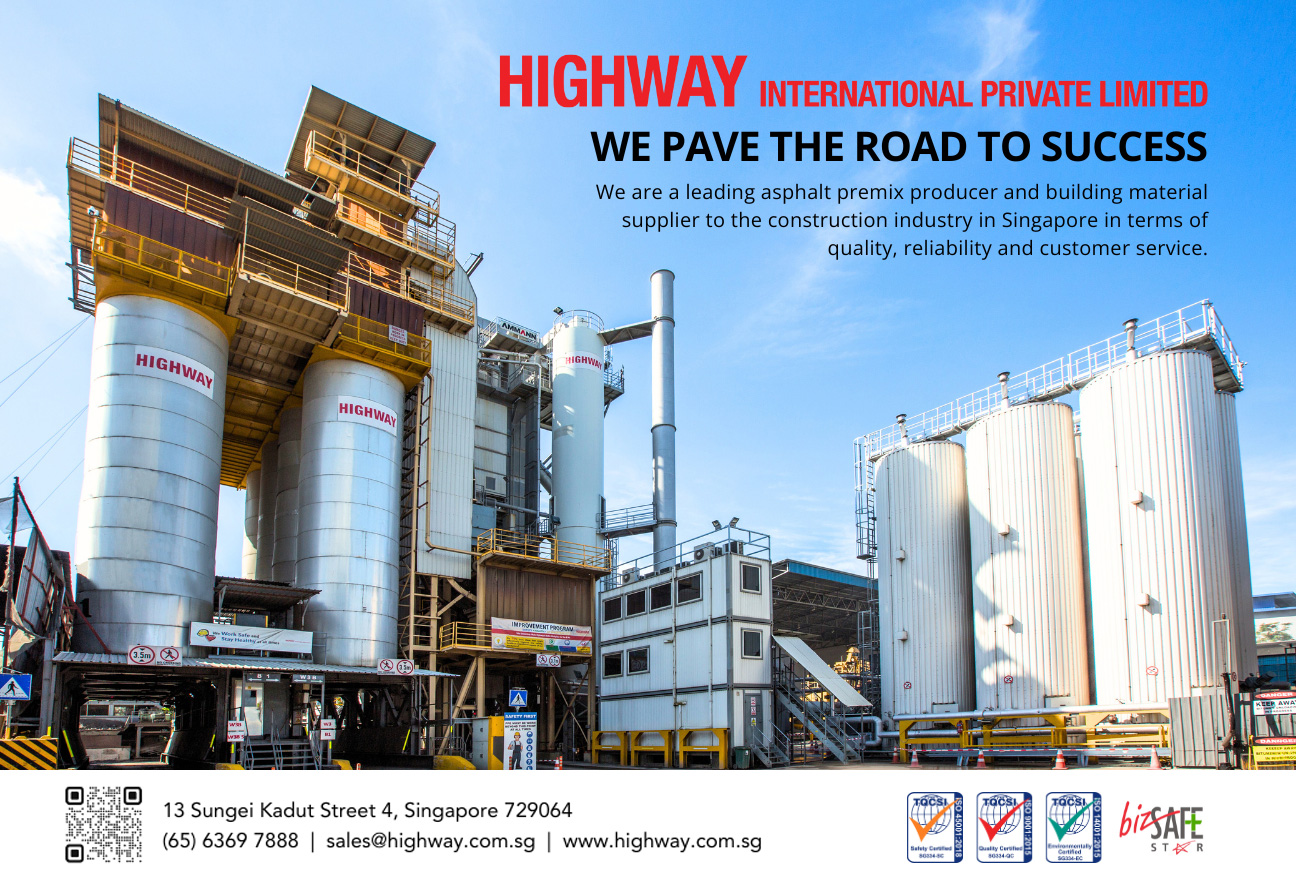
Advertisement
“However, as the company grows, the number of employees under your care increases significantly. While you broaden your connection to more people, the depth of those connections diminishes because you’re no longer working side by side with those on the ground.
“HSC is a multi-generational company, from Baby Boomers to gen Z, each generation and employee has different wants, needs and motivations. When managing change, we have to understand their concerns and address them appropriately.
“For example, the majority of the senior staff prefer stability as they are used to the existing processes and do not see the need to change. To them, the change process is disruptive, bringing uncertainty while the benefits are largely unknown to them.”
Senior staff can be encouraged to change their mindset and processes through communication and assistance, Shi says. This involves explaining the rationale behind the new processes and taking in their valuable experience in the existing processes.
With their buy-in and taking ownership of the new processes, they are a steady hand to ensure the new processes are managed and integrated properly.
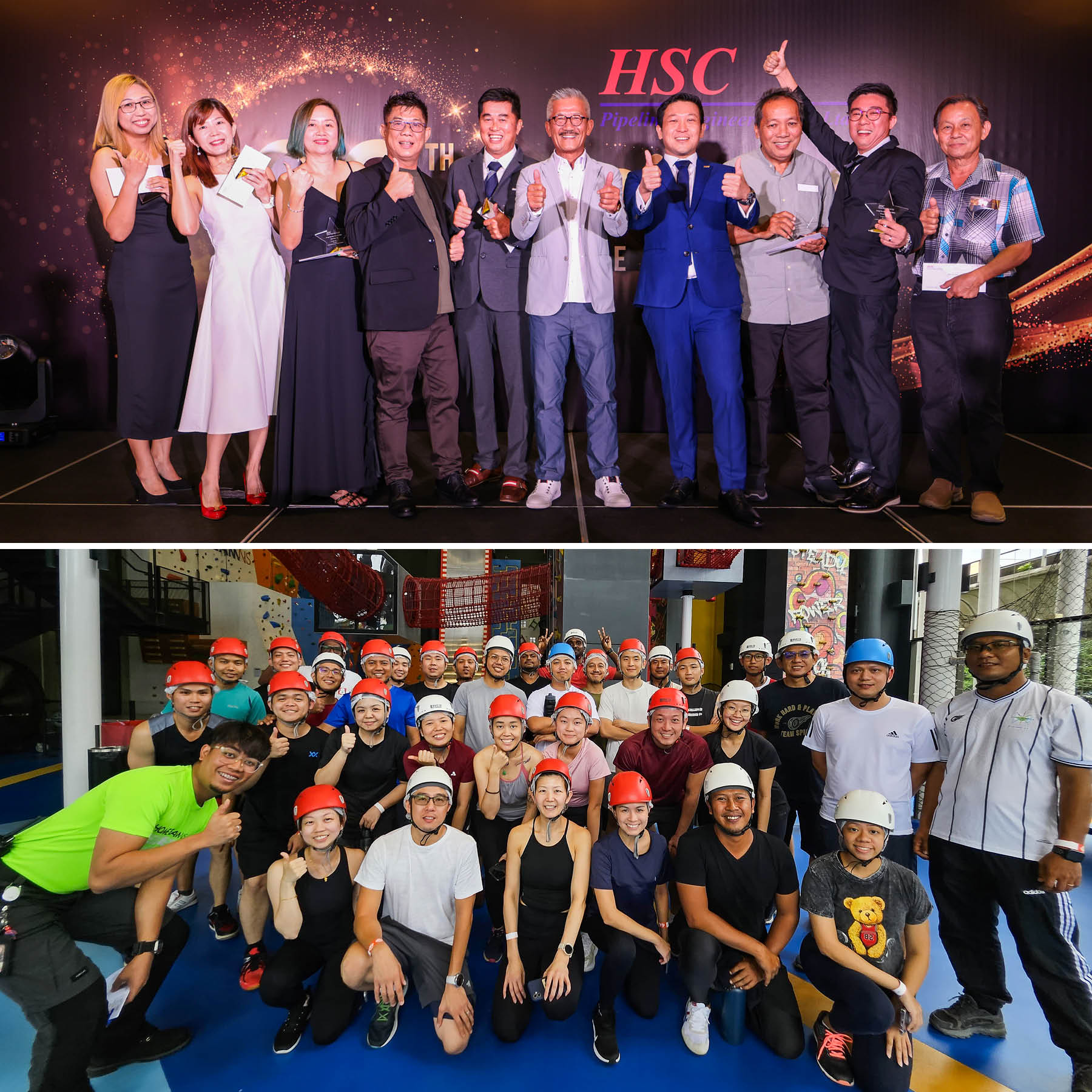
“Being a good leader comes down to knowing your team.”
When it comes to Millennials, Shi believes they are much more enthusiastic when it comes to using new technology and, in some cases, too enthusiastic.
“There have been many suggestions for the use of different software and hardware technology, without a deep understanding of whether the technology is a good fit for our organization. The trick is to give them time, listen to them, and give them opportunities to test their ideas in a smaller controlled environment, to see what benefits and issues come along with the adoption of the technology,” he says.
“When it works, we then allow them to be the change manager to apply the solution to a larger environment and ultimately, the whole company. While most of the proposed solutions would not be a good fit for the company, the knowledge and experience gained from these small experiments are important, allowing us to identify the next good technology.”

Advertisement
Being a good leader comes down to knowing your team, Shi says. One way he ensures this is by personally participating in the recruitment process, allowing him to assess future employees firsthand.
“During the interview, you can learn a lot about the candidate from their preparation, confidence, self-awareness, and non-verbal cues like body language. Staying connected with your employees is essential for understanding what motivates and inspires them,” he explains.
“We put a lot of effort into hiring the right people to build the culture we envision. Without the right talent, managing different departments and projects becomes inefficient and time-consuming. Real synergy stems from hiring the right individuals, motivating them, inspiring them and ensuring they share our vision. For me, that’s the key to success.”

